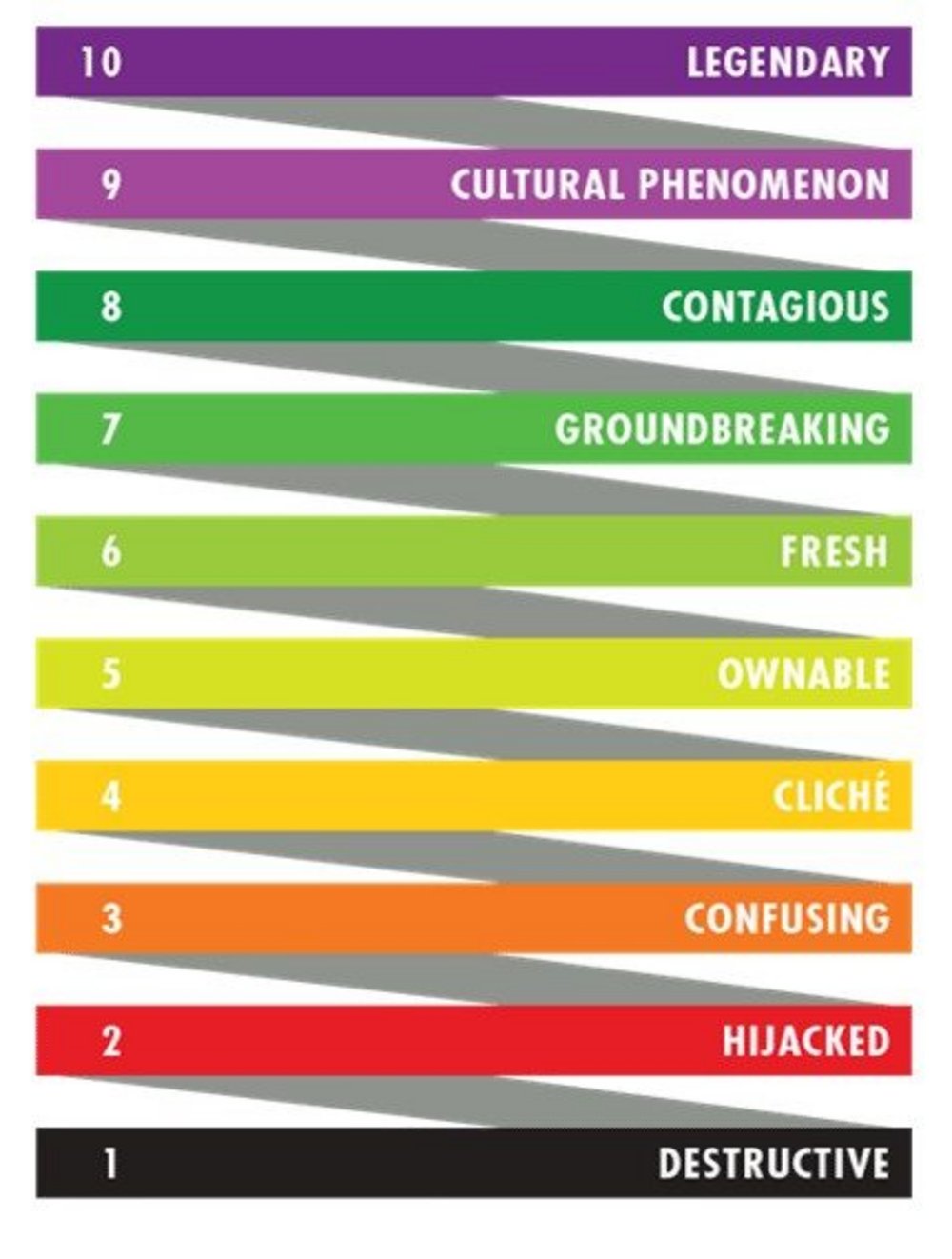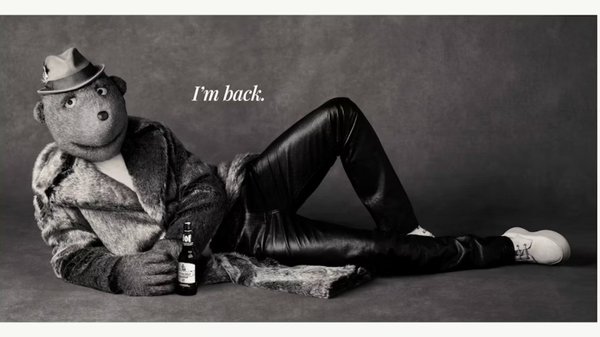Creative empire building: Consistency tips from ancient Rome /
How can marketers make achieving great creativity more predictable and systematic? James Womersley turns to the past masters of consistency for answers – after all, everything ends up leading back to Rome
James Womersley
/
At Contagious we often witness the phenomenon of the ‘shooting star’ brand, which shines creatively for a short time under the auspices of an inspiring creative leader, only to disappear from view when that leader leaves.
This suggests that great creativity often springs from the power of personality rather than from a brand’s culture. Creativity that is entrenched within an organisation is the exception rather than the rule. This is a problem if brands want to reap the commercial rewards that creativity brings on a consistent basis. And those rewards are clear. McKinsey has shown that creative companies are the ones that typically outperform rivals on a number of key commercial metrics: organic revenue growth, total return to shareholders and net enterprise value.
The Contagious Advisory team has worked with some of the world’s largest and most forward-thinking marketing organisations to help them build cultures of consistent creative excellence. We know from experience that establishing a culture of creativity is not easy. As with many gnarly problems, it helps to look beyond the confines of the immediate industry, or even of the immediate era. Confucius encourages us to ‘study the past if you would define the future’. When we look into the past, there is one civilisation that, despite its many flaws, was prodigiously effective at establishing a political culture of consistent excellence. That civilisation was Rome.
From their humble origins as a small and unremarkable hilltop community on the Italian peninsula, the Romans developed an empire that would dominate the Mediterranean for well over a millennium. At its height, in 117 CE, this empire covered more than 5 million square kilometres and incorporated more than 60 million people. In the process, the Romans managed complexity at an unprecedented territorial scale, maintained consistent ascendency over their rivals (despite the frequent churn in leaders), and successfully fought off the incursions of ferocious challengers. In short, they faced many of the same fundamental challenges as marketers today.
The Romans had four killer tools for strengthening their culture: roads, Latin, baths and triumphs. While these tools may seem risibly irrelevant to modern marketers, they hold some powerful lessons for developing cultures of consistent creative excellence.

Roads: bringing the outside in /
The Romans were prodigious road builders. Their roads were straight and built to last, stretching the length and breadth of the empire. But the purpose of this transport network was not the brutal and absolute imposition of Roman customs on conquered people (despite common misconceptions fuelled by the questionable historical accuracy of Asterix the Gaul). The reality was more nuanced. The Romans absorbed foreign cultural practices at the same time as exporting their own. Their roads were central to this process of two-way osmosis.
It’s critical that modern brands adopt a similar attitude of openness. Human beings have an atavistic and often subconscious bias to favour people who look, sound and behave like they do. But organisations often don’t address this bias. Speaking at Cannes Lions last year, 72andSunny chief operating officer Evin Shutt observed that the marketing industry lives and dies on innovation, and that diversity is a crucial driver of that very innovation. One consequence of having more diverse teams: a healthier bottom line. For instance, McKinsey has found that ethnically diverse workforces are 35% more likely to have above-average financial returns than non-ethnically diverse ones. The commercial imperative for diversity runs in parallel with the moral imperative.
Alongside this structural approach, brands must ensure that a stream of quality inspiration finds its way into the organisation. It is the marketing equivalent of ‘you are what you eat’. Wendy’s, a brand covered in depth in our previous issue, leads the way on this front. The Wendy’s marketing team, in collaboration with its partner agency VMLY&R, acts almost like a news team, holding weekly editorial meetings dedicated to mining popular culture and ensuring that they remain on the cusp of the cultural wave. This approach landed Wendy’s the Social & Influencer Grand Prix at Cannes last year for the Keeping Fortnite Fresh campaign.
But having brought in a variety of viewpoints and influences, how can conversations about creativity be as effective as possible?
James Womersley, Contagious
Latin: embracing a common language /
Latin was key to Rome’s enduring success. It was the official language of the empire – the language of politics, the military and religion. Latin inscriptions appear on ancient monuments from Britain to Libya, Spain to Turkey. This official language bound people together and addressed the linguistic problems posed by a sprawling empire populated by disparate groups of people.
One of the key difficulties of constructively engaging with creative work is rooted in language. Evaluating creative work is hard – it is personal, subjective and ambiguous. Often, people simply don’t have the right words to articulate why they feel a piece of creative work is either good or bad. This is why it’s so important to establish strong, shared criteria.

These criteria can come in the form of a creative evaluation tool. We worked with Heineken to develop its proprietary tool: the Heineken Creative Ladder. It has been described as the ‘backbone’ of the organisation’s creative capabilities by its former senior director of global marketing development, Cinzia Morelli-Verhoog. The Creative Ladder is a 10-point scale, with 1 reserved for actively destructive work (think Pepsi’s Kendall Jenner fiasco) and 10 denoting legendary, once-in-a-lifetime creative (think Red Bull Stratos). It is designed to help marketers evaluate creative work through-out the development process, ensuring that everyone has a clear, shared and codified vision of what makes great work. It enables marketers to set practical benchmarks and closely monitor progress. Ultimately, it helps scale behaviour so that creative literacy isn’t limited to pockets of individuals but is institutionalised across an organisation. There is a myth that creative judgement is an innate talent; in reality it’s a muscle that can be developed and honed with practice.
The effectiveness of evaluation tools like the Creative Ladder hinges on them being granular and integrated. Each level should be substantiated by clear and detailed descriptions, using consistent vocabulary so that the same creative characteristics are analysed across the scale. There should be suggestions for what marketers need to look out for at each level, and explanations for how work could move up the scale. In short, an evaluation tool needs to be as practical as possible. It then needs to be integrated into existing processes and documentation, so that the principles of the tool become baked into a marketer’s everyday life. This means integrating the tool into brand strategy documents, briefing templates and creative review presentations.
Finally, an evaluation tool should be tangible. A tool that’s buried away on a company intranet is not helpful. For Heineken, Contagious created a pocket-sized book containing all of the most pertinent information from the Creative Ladder. It became a portable aide-mémoire for the marketing team.
A well-designed creative evaluation tool will help both brands and their agency partners develop stronger creative work. But how can a brand work as effectively as possible with its partners?

Baths: forging robust relationships /
The third killer tool was the concept of the public baths. These baths were constructed across the empire as totems of Roman culture. But they weren’t just about cleanliness; they were also where people came together. At the baths, interactions were governed by a strict process: beginning in the tepidarium (the warm room), moving to the caldarium (the hot room) and then to the frigidarium (the cold room). Finally, they could recline in the laconium (the resting room). This resulted in not just healthy bodies but healthy relationships as well.
For the modern marketer, establishing and nurturing multiple relationships has never been more important. Marketers are working with more people than ever before – a report from the Association of National Advertisers found that 42% of advertisers now work with more than five agencies at the same time. With so many contacts to maintain, there is an added imperative to put deliberate processes in place to build relationships through ordered face-to-face collaboration.
The UCLA psychologist Albert Mehrabian famously found that 90% of communication is non-verbal – body language, inflection, facial expressions and tone all play their part. Technology in 2020 provides us with a host of different ways to avoid face-to-face meetings. But just because the technology exists, doesn’t mean that it should be a default. Sometimes the analogue ways are the best. If you don’t make the time and space to work with your agency partners in person, you could end up talking without speaking, and listening without hearing.
In face-to-face meetings, a structured and clear approach to collaboration can improve the quality of the creative outcome. Marketers should think about who’s involved, who speaks first and last in creative review meetings, what kind of questions are best for opening up the conversation, and how a response can best be structured to nurture and grow creative ideas rather than cut them down prematurely.
But what about after creative work has been developed and a campaign has been launched? What can marketing leaders then do to develop a culture of creative excellence?

Triumphs: creating and inspiring greatness /
The final tool that the Romans had at their disposal was the triumph. This was a grand public event to celebrate a great military victory. To be awarded a triumph was the highest possible honour; it was the Cannes Lions Grand Prix of the Roman world. The general and his troops paraded through the streets of Rome, their spoils of war dragged behind them. There were even placards and paintings recounting heroic deeds from the campaign – in effect, the original case-study videos.
These triumphs served a dual purpose. Firstly, they were a powerful recognition of military excellence: the victorious general – his face painted red – was cast in the role of Mars, the god of war. Secondly, they inspired excellence in others. A triumph sent an unequivocal message to the youth of Rome about the path to individual glory.
These same drivers of recognition and inspiration have led a number of big brands to establish their own internal awards programmes, such as McDonald’s Feel Good Marketing Awards, AB InBev’s Creative X Awards and Mondelēz’s Marketing Excellence Awards. These initiatives signal that those brands value and reward creative excellence. They also carry powerful motivational weight; in the words of behavioural economist Dan Ariely, ‘Acknowledgement is a kind of human magic.’
Looking back to move forward
So, if you want to develop a culture of consistent creative excellence, you could do worse than following the example of the Romans. Embrace diversity and curiosity, build a common language, adopt a structured approach to relationships, and celebrate and reward success. While we can’t promise that your brand will last 1,000 years, we can say with confidence that creativity will move from being the preserve of the few to the priority of the many.
Want more Contagious insights? Sign up to one of our Lockdown Learning livestreams. From the consumption crisis to cultural relevance, we use best-in-class case studies, rigorous research and expert opinion to help you navigate the most pressing issues facing brands and marketers today. Click here to register.
Want more of the same? /
We don’t just write about best-in-class campaigns, interviews and trends. Our Members also receive access to briefings, online training, webinars, live events and much more.







